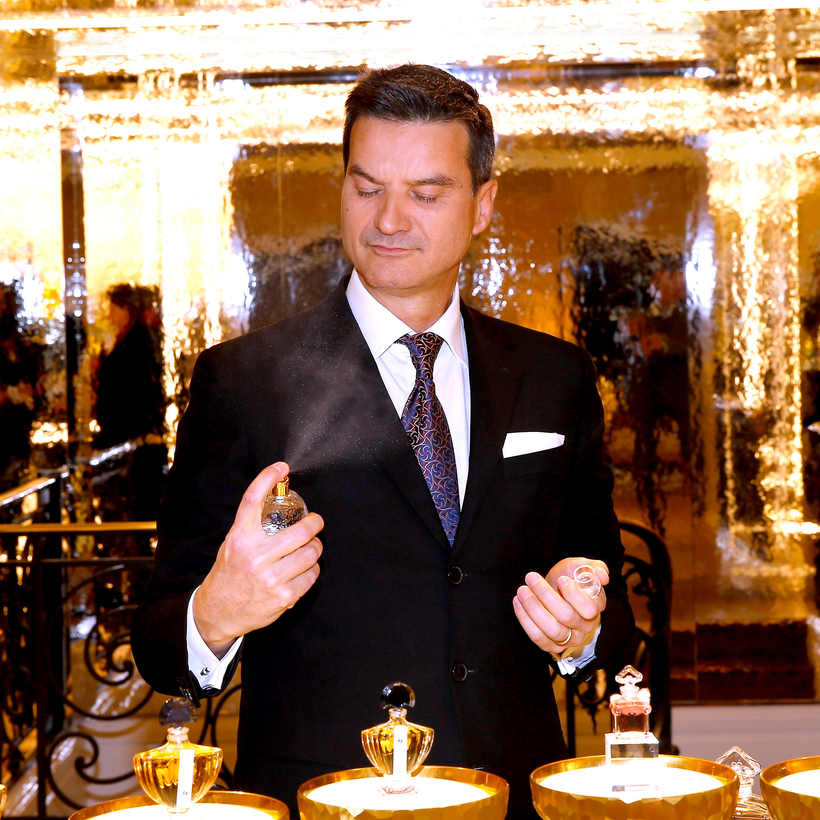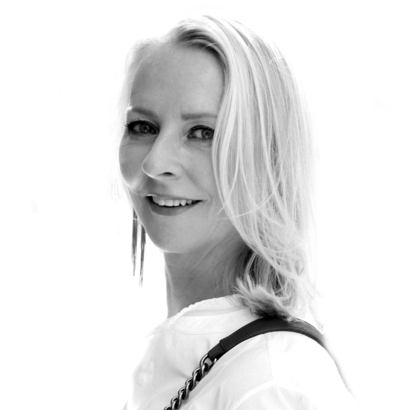When you were 13 years old, you may have ripped scent strips out of a magazine and rubbed them onto your wrists. Maybe you wandered through a mall every Saturday, spraying your neck with testers until your head throbbed. Did you douse yourself with Love’s Baby Soft? Bath & Body Works Cucumber Melon? The Body Shop White Musk? Axe (please, no)?
If you answered yes to any of the above, you clearly were not destined for a career in perfumery.
When Thierry Wasser was 13, long before he became a master perfumer, he found his identity in a bottle of Habit Rouge. Not your ordinary adolescent spray, Habit Rouge is sophisticated and refined and as un-Axe as it gets. And that’s exactly why Wasser selected it. “I was short, fat, and without a mustache,” he says. His mustachioed school-mates, undoubtedly smelly, called him “baby face.” So he retaliated by re-creating himself in the image of a family friend, “a very strong, masculine figure, very elegant, lots of culture. A real man.” This manly man wore Habit Rouge, “so I took it!” says Wasser.
“That was my disguise,” he says. “My attitude around all those little hairy dudes changed. If I say this it might sound a little odd, but it’s my manhood.” True, a little odd. “It’s my Superman disguise.”
Maybe it’s fate, because his secret power—the one he has relied on every day for more than 45 years—comes from a bottle made by the house of Guerlain, where he is now the lead perfumer, the fifth generation since the birth of the house, in 1828.
The life of a perfumer sounds fancy—sniffing things, mixing extracts, looking dreamily into the distance, reading Proust. Over the years Wasser has done plenty of sniffing and dreaming, creating a string of hits that includes Addict, for Christian Dior; Hypnôse, for Lancôme; Idylle and La Petite Robe Noire, for Guerlain; plus blends for Armani, Jil Sander, Van Cleef & Arpels, and Fendi.
But creating and making fragrances are two different exercises, and most of his real work at Guerlain is in the making, in keeping Shalimar, Jicky, L’Heure Bleu, and Mitsouko fresh and relevant. He sources ingredients all over the world and reformulates the recipes when regulations change or raw materials become scarce.
It’s hard to imagine the self-assuredness it takes to tinker with a masterpiece. And while we’re not talking about a Leonardo da Vinci canvas, it’s still something. Fragrance freaks lose their minds anytime a recipe is altered by so much as a drop.
Here’s an example: Shalimar, which was created in 1925, is about 30 percent bergamot, a fruit that looks like an orange and smells a bit like a lime. In the 1980s, bergamot was found to cause brown spots on sun-exposed skin—not quite what you want from a beauty product. As a result, the perfumers had to alter the bergamot and adjust Shalimar’s formula. “You can see the difference between the one we have today with the one from 1925,” says Wasser. “My task as a gardener of that patrimony of fragrances is to keep the effect alive. To cherish that fragrance.”
He joined the house in 2008 with no interest in reverence. He quickly whipped up Idylle, which he described to me, with some irony, as an “intercosmic success.” Wasser presented his special new baby to salespeople throughout France, and their reaction was unexpectedly tepid. Where was the “Guerlinade,” they asked, the aura of the house?
It turns out that Jacques Guerlain, the house’s most prolific perfumer, who created more than 400 scents, always included six raw materials—rose, jasmine, iris, bergamot, tonka bean, and vanilla—in every blend. One writer, Luca Turin, refers to Jacques in the book Perfumes: A Guide as a “virtual pastry chef” who made fragrances that were almost edible.
It’s hard to imagine the self-assuredness it takes to tinker with a masterpiece.
“I learned my lesson,” says Wasser, sounding humbled.
As a fragrance-maker, Wasser spends much of his time with farmers and producers in southern India for jasmine and tuberose, Sumatra for patchouli and benzoin, Venezuela for tonka beans, Haiti for vetiver, Madagascar for vanilla, Tunisia for orange blossoms, and Bulgaria for roses. “The fragrance is incarnated by all those people” who cultivate and extract the flowers and resins, he says. “There are so many people in a bottle of fragrance.”
Once the liquid is bottled, the marketers go to town, creating stories and fantasies for each scent. Seduction was the ruling proposition for decades, with bodies entangled in a Calvin Klein Obsession orgy in 1985, or the suggestive subtext of a woman by a pool under an airplane’s shadow in Ridley Scott’s “Share the Fantasy” ad for Chanel No. 5 in 1979, or the hiccup of Victoria’s Secret Very Sexy, Very Sexy Night, Very Sexy Summer, Very Sexy Now, Very Sexy Sea from 2007 to 2020. Sexy for every season, sexy for every time of day.
Now, after a cold shower, fragrance-makers are looking at less humid propositions: at scent as a mental escape, a shot of self-esteem. The Habit Rouge defense against a group of pubescent bullies. “God knows your self-esteem is challenged every day,” says Wasser. “You’re too old, you’re too skinny, you’re too fat, you’re too short, you’re too tall, whatever. Beauty is a great remedy against this kind of insecurity.”
One could argue that the preoccupation with appearance is actually a source of this anxiety rather than an antidote, but Wasser is trying to counteract that. “When you smell yourself, you feel good. When you design products like this, you have to convey that feeling … It’s more profound than lipstick or a bottle of something smelling good for Valentine’s Day.”
To that end, many designers and fragrance houses today are less interested in creating blockbusters of the J’Adore and Coco Mademoiselle caliber and more focused on small, quirky scents. Besides, blockbusters require staggering marketing budgets. As consumers have become more knowledgeable about fragrance, they’ve also become more discriminating and open to the idiosyncratic. Guerlain has shifted its attention to those more artistic creations, 22 of which Wasser has created so far.
“I would love for people to believe, first of all, that the fragrance is for themselves,” he says. “Fragrances are designed to express something. It’s about joy, about love, about connecting people.” Share the fantasy.
Linda Wells spent 25 years as Allure magazine’s founding editor, served as Revlon’s chief creative officer, and currently consults and sits on the boards of several beauty and apparel companies


